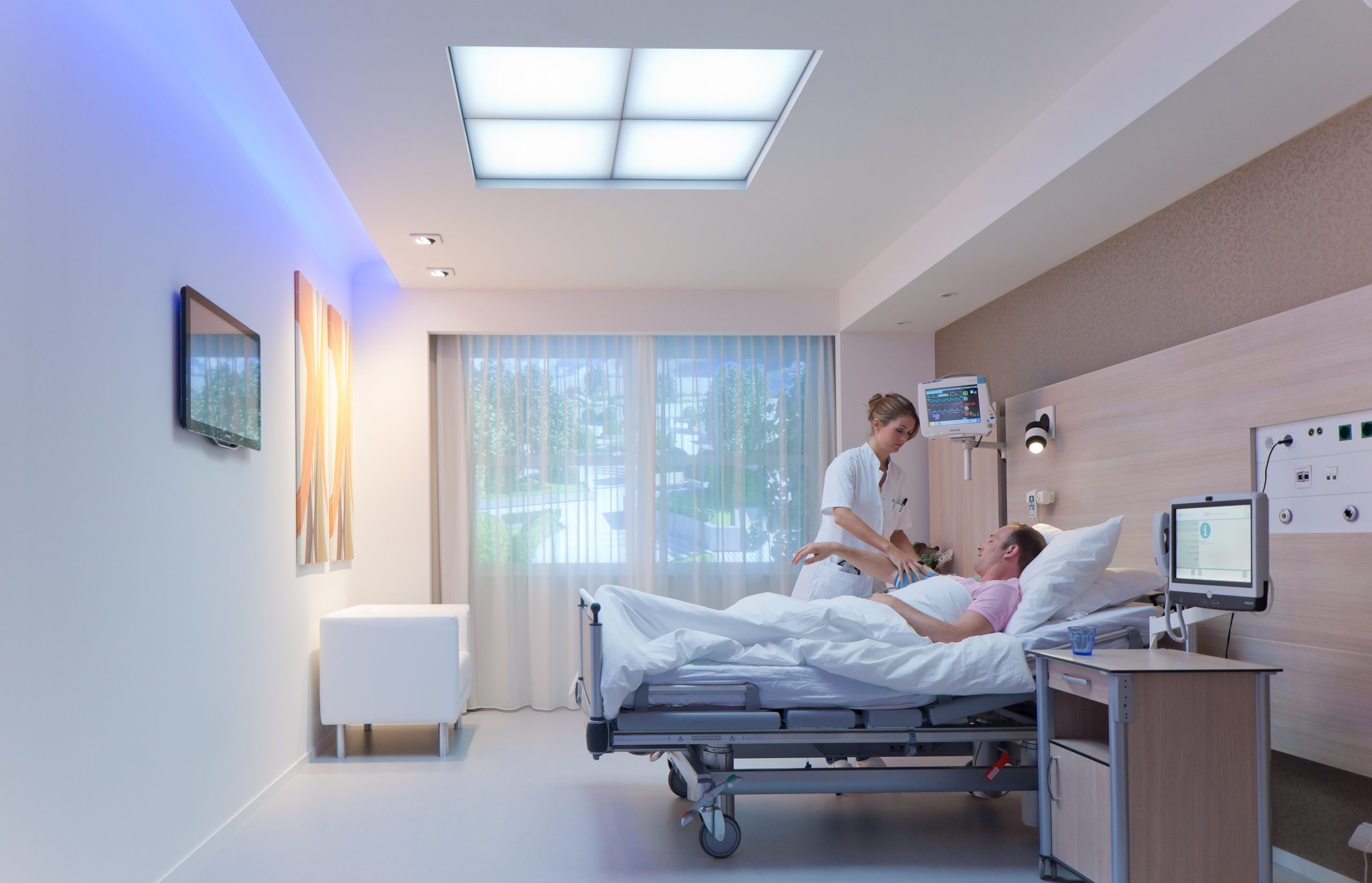
Philips introduces the Silent Patient Room, a revolutionary concept aimed at humanizing hospital environments, particularly in the ICU. Through seamless integration of diverse medical devices and innovative communication channels, this solution prioritizes patient comfort while enhancing clinical efficiency. By leveraging Philips’ Service-Oriented Device Connectivity (SDC) platform, hospitals can create silent ICUs, reducing noise pollution and improving overall patient experience. The Silent Patient Room represents a paradigm shift in healthcare delivery, emphasizing the importance of patient-centric care and streamlined communication in modern hospitals.
In healthcare settings, the incessant beeping of alarms can create a stressful environment for patients and clinicians alike. Recognizing the need for a more humane approach, Philips is unveiling the Silent Patient Room at HIMSS24. This innovative solution reimagines the traditional ICU setup by replacing audible alarms with discreet mobile notifications, enhancing communication and reducing noise pollution. By leveraging interoperable technology and prioritizing patient comfort, the Silent Patient Room represents a significant advancement in hospital design and patient care.
Traditionally, hospital environments are inundated with alarms and beeps, each signaling a different urgency that demands immediate attention from clinicians. However, these auditory alerts not only disrupt the healing process but also contribute to an overall sense of stress and discomfort for patients. Recognizing this issue, Philips is introducing a solution that prioritizes patient comfort and well-being without compromising on the quality of care.
At the core of the Silent Patient Room concept is the seamless integration of various medical devices and technologies through Philips’ Service-Oriented Device Connectivity (SDC) platform. This innovative approach allows clinicians to access and monitor data from different devices, such as patient monitors, sensors, ventilators, and infusion pumps, irrespective of the manufacturer. By eliminating the silos created by proprietary systems, hospitals can now create a cohesive ecosystem that enhances efficiency and patient outcomes.
One of the key challenges in implementing a silent ICU is achieving interoperability among devices from different manufacturers. Christoph Pedain emphasizes that Philips’ SDC technology overcomes this hurdle, enabling hospitals to mix and match equipment from various vendors seamlessly. This flexibility not only promotes innovation but also empowers hospitals to tailor their solutions according to their specific needs and preferences.
The traditional ICU setup relies heavily on audible alarms to alert clinicians about potential issues with equipment or patients. However, these alarms often create a cacophony of sounds that can be distressing for patients and contribute to sensory overload. With the Silent Patient Room, Philips is reimagining this paradigm by shifting the focus away from audible alerts to more discreet and efficient communication channels.
Instead of relying on room-based alarms, the Silent Patient Room leverages mobile phone apps carried by nurses to receive and respond to alerts in real time. This not only reduces the need for clinicians to constantly monitor individual rooms but also streamlines communication and response times. By directing alerts to the appropriate personnel via mobile devices, the Silent Patient Room ensures that urgent issues are addressed promptly and efficiently, minimizing disruptions and enhancing patient comfort.
The implementation of the Silent Patient Room requires a shift in clinical procedures and mindset, acknowledges Pedain. Hospitals must prioritize patient safety while embracing new technologies and workflows. This includes establishing protocols for escalating alerts if they are not acknowledged within a certain timeframe, ensuring that no critical issues go unresolved.
The benefits of the Silent Patient Room extend beyond just reducing noise pollution in the ICU. By creating a quieter and more serene environment, hospitals can significantly improve the overall patient experience and facilitate faster recovery. Moreover, by empowering clinicians with streamlined communication tools, the Silent Patient Room enhances workflow efficiency and reduces the burden of alarm fatigue.
While the concept of the Silent Patient Room is still in its early stages, some hospitals have already begun experimenting with this innovative approach. As more healthcare institutions recognize the value of prioritizing patient comfort and well-being, the adoption of solutions like the Silent Patient Room is expected to become more widespread.
The Silent Patient Room heralds a new era in healthcare, where patient comfort and well-being are paramount. By harnessing the power of interoperable technology and innovative communication channels, Philips is transforming hospital environments into more humane and efficient spaces. As healthcare institutions embrace this paradigm shift, the adoption of solutions like the Silent Patient Room is expected to improve patient outcomes and enhance overall satisfaction. With its ability to create silent ICUs and streamline clinical workflows, the Silent Patient Room exemplifies Philips’ commitment to innovation and patient-centric care in modern healthcare.




